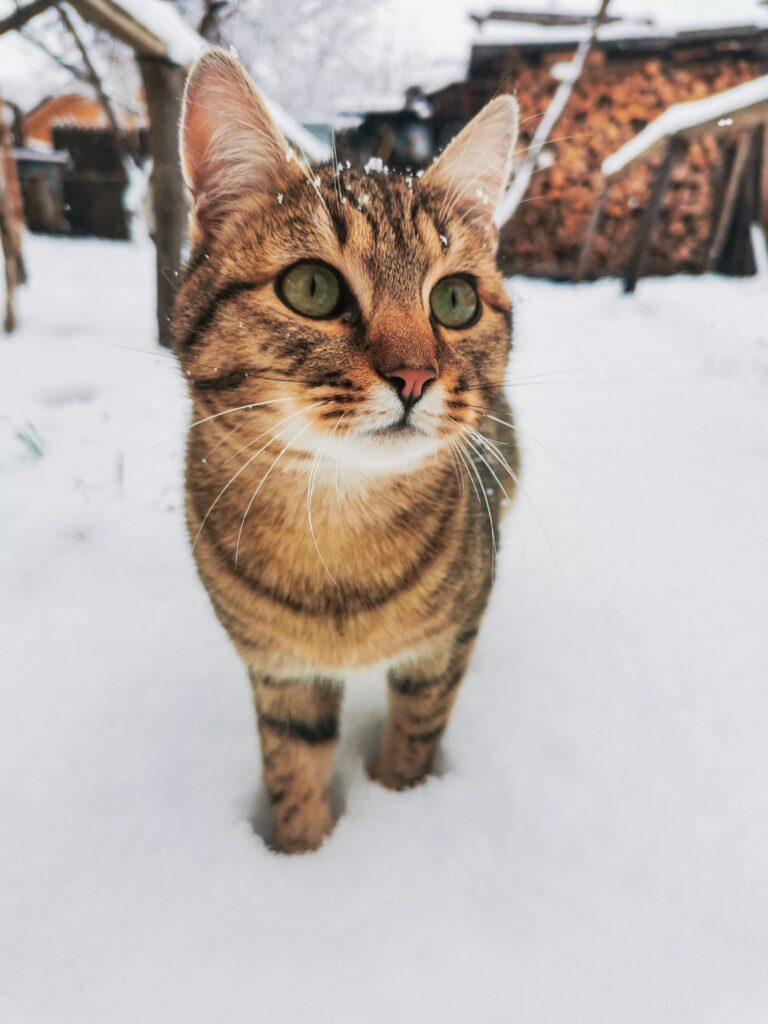Understanding Cats’ Cold Sensitivity: A Comprehensive Guide
Understanding how cats respond to cold temperatures is critical to their health. Contrary to popular belief, cats are not immune to the cold, and a variety of factors influence their susceptibility to it. From their unique physiology to practical tips for keeping them warm. This guide delves into the complexities of feline cold sensitivity.
Introduction
Cats, despite their reputation for toughness, are susceptible to the cold. This guide aims to debunk common myths and shed light on the nuances of feline cold sensitivity, emphasizing the importance for pet owners to understand how cold weather affects their furry companions.


Feline Physiology and Cold Sensitivity
1. Natural Insulation: Cats have a remarkable natural insulation system, which is primarily based on their fur. Understanding the dynamics of their fur, from guard hairs to undercoats, reveals how they stay warm in cold environments.
2. Factors influencing temperature regulation: Age, health status, coat length, and body fat composition are all important factors in a cat’s ability to regulate body temperature. Exploring these factors reveals why some cats are more cold-sensitive than others.
3. Breed Variations Certain cat breeds, such as the Siamese and Sphynx, are more susceptible to cold due to their thinner fur coats and lower body fat. In contrast, breeds such as the Maine Coon thrive in cold climates due to their denser fur.
Signs of Cold Stress in Cats
1. Behavioral Cues: Recognizing behavioral cues such as excessive shivering and seeking warm spots is critical in determining when cats are uncomfortable due to the cold.
2. Physical Symptoms: Cold exposure causes physical symptoms such as cold ears, pale gums, and lethargy, which indicate potential distress. Understanding these signs allows pet owners to intervene effectively.
3. Providing Extra Warmth: Observing cat behavior and providing supplemental heating options, such as heated beds or blankets, ensures their comfort during the colder months.
Risks Associated with Cold Exposure
1. Health Complications: Prolonged exposure to cold temperatures can aggravate pre-existing health conditions in cats, resulting in respiratory infections and arthritis flareups.
2. Vulnerability to Illnesses: Cold environments weaken cats’ immune systems, making them more vulnerable to illness and infection. Hypothermia and frostbite are serious risks, especially for outdoor cats.
3. Preventive Measures: Recognizing these risks emphasizes the importance of taking proactive measures to protect cats from extreme cold, both inside and outside.
Ways to Keep Cats Warm and Comfortable

1. Indoor Shelter: Providing cozy indoor shelters and warm bedding options, as well as consistent room temperatures, protects cats from the cold.
2. Creating a Cozy Environment: Sealing drafts, providing snuggle spots, and using safe heating methods help cats stay warm and content during the colder months.
3. Safe Heating Practices: Using pet-safe space heaters and heated cat beds with automatic shutoff features reduces the possibility of accidents while keeping cats warm and safe.
Understanding Cats’ Cold Tolerance
1. Individual Variations: Each cat has a unique cold tolerance level, which is influenced by factors such as coat thickness, age, and health status. Individual care must be tailored to their specific needs for optimal health.
2. Climate Adaptation: Cats adapt differently to colder climates, necessitating changes in living conditions and care routines to ensure their comfort and health throughout the year.
Winter Care Tips for Outdoor Cats
1. Protective Strategies: Insulated shelters, elevated bedding, and unfrozen food and water sources are critical for protecting outdoor cats from winter hazards.
2. Community Support: Collaborating with local animal welfare organizations creates a supportive environment for community cats, ensuring they receive the care and protection they require during the colder months.
The End?
Understanding cats’ cold sensitivity is essential for responsible pet ownership. Pet owners can help their feline companions thrive in cold weather by recognizing signs of distress, implementing preventive measures, and providing warm shelter and care.
Additional Resources and Further Reading
For those seeking additional information and resources on feline care and welfare.
Organizations like the American Association of Feline Practitioners and the ASPCA offer valuable insights. Moreover, exploring related topics through books and guides enriches one’s understanding of cats’ cold sensitivity and winter care practices.
In conclusion, cats do get cold, and as responsible pet owners. it is our responsibility to keep them warm, comfortable, and safe regardless of the season. By arming ourselves with knowledge and implementing the practical strategies outlined in this guide, we can ensure that our beloved feline companions thrive in any weather.
Thinking about vaccinating your CAT? Must read before doing so- Should I get my cat vaccinated?
Read more about the best ways to treat your cat- What is the best food for my cats?


